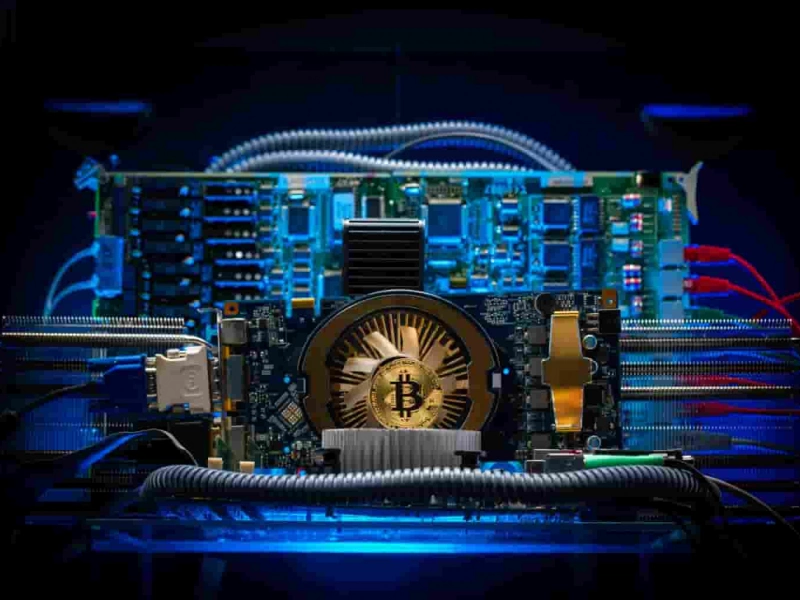A mining rig is essentially a specialized computer system designed specifically for cryptocurrency mining, featuring multiple graphics cards. Small-scale mining operations typically utilize 6-20 GPUs, while larger operations can incorporate hundreds or thousands of units. Since standard computer cases cannot accommodate multiple graphics cards, they are mounted on a specialized frame called a rig, typically designed to hold 6 GPUs.
Frame Options and Materials
While pre-built frames cost between $15-100, building your own is more economical. The construction requires no specialized expertise – anyone with basic PC knowledge can handle it. The key materials used include:
- Wood: Most affordable option (around $10) but vulnerable to fire and moisture damage
- Aluminum angles: Mid-range option ($25) offering durability, fire resistance, and easy maintenance
- Hybrid designs: Combining aluminum profiles with wooden elements or metal pipes

Dimensional Considerations
Proper cooling and air circulation are crucial factors in frame design. While enclosed cases offer superior temperature control, they're typically more expensive. Standard dimensions for a 6-GPU rig are:
- Width: 55-60 cm
- Depth: 35 cm
- Height: 30 cm
For 12-GPU setups, the width extends to 120 cm while maintaining the same depth and height. Multiple frames can be arranged side by side or stacked vertically.

Essential Components
A complete mining rig requires:
- Motherboard with multiple PCIe slots (preferably 6+)
- Graphics cards (chosen for optimal ROI)
- Power supply (1000W minimum, may require secondary PSU)
- Compatible processor
- 8GB RAM minimum
- SSD storage (preferred)
- PCIe USB risers
- 3-5 fans for enclosed setups
- Necessary cables and power strips
- Frame structure
Assembly Approaches
Pre-built Option: Purchasing pre-assembled rigs offers convenience and warranty coverage but comes at a premium ($20-100 for frame, $20-90 for assembly). Enclosed cases with advanced cooling can exceed $180.
DIY Assembly: The self-build approach maximizes cost-efficiency, crucial for achieving the typical 2-2.5 year ROI period. The process involves:
Frame Construction:
- Prepare materials (treated wood or metal corners)
- Gather necessary tools (measuring tape, drill, screwdriver, hacksaw)
- Follow design specifications
- Assemble frame using appropriate fasteners
Component Installation:
- Mount motherboard with proper insulation
- Install RAM and processor
- Apply thermal paste and cooling
- Connect storage and risers
- Mount GPUs with adequate spacing
- Connect power supply and peripherals
Cooling System:
- Ensure proper ventilation
- Install additional fans as needed
- Consider thermal pad upgrades
- Position rig for optimal airflow
Setup and Configuration:
- Install operating system and drivers
- Configure BIOS settings
- Join mining pool
- Install and configure mining software
- Setup remote access
- Implement auto-start procedures
Common Challenges Users should be prepared for various issues:
- System stability problems
- Component failures
- Network connectivity issues
- Cryptocurrency market volatility
- Power consumption concerns
- Temperature management
- Security considerations
Management and Maintenance
Mining operations require minimal daily oversight once properly configured. Remote management tools like TeamViewer enable monitoring from anywhere. Regular maintenance includes:
- Temperature monitoring
- Hash rate verification
- Performance optimization
- System updates
- Hardware checks
Conclusion Building a mining rig is accessible to anyone with basic PC knowledge. While pre-built options exist, DIY assembly offers significant cost savings. Success depends on proper component selection, assembly, cooling, and ongoing maintenance. The initial investment and setup complexity are balanced against potential long-term returns in cryptocurrency mining.
- How to reflash the Antminer S9?
- Equihash mining algorithm: an overview
- What is more profitable PPS or PPLNS?
- What is Dash (Dash) cryptocurrency?
- How to Know Mining: Key Terms
- Crypto A to Z: Cryptocurrency glossary of common terms
- What is a scam?
- What are parachains?
- What is NFT?
- What is Bitcoin?
- How to assemble a rig for mining with your own hands







